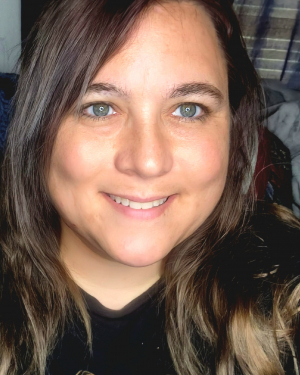When I thought of PTSD before we adopted from foster care, my first thought would have been of a soldier who came home from war and responded disproportionately to fireworks or a car backfiring. Sad, yes, but also not really something I would interact with every day. The fact that children who were adopted from foster care can and very often do experience PTSD was a very new and terrifying knock to my worldview as a whole.
Why was it so shocking? Well, to that point I had only heard about how “kids are so resilient”. But it turns out, they aren’t that resilient. Their trauma is simply processed in a way that is different from an adult’s. They haven’t developed the coping skills to work past a PTSD trigger and continue living their lives.
That viewpoint does a disservice to everyone. Soldiers suffering from PTSD and children who are suffering from PTSD are both re-living their trauma over and over. Their bodies clench and their muscles contract as they prepare to run away or defend themselves. They are not in control of the way their body responds. Children are failed when an assumption that they’ll grow out of their trauma is made. By viewing PTSD as a demographic-specific disorder, a counselor may subconsciously rule out certain diagnoses.
A few things before I get further in the weeds. PTSD stands for Post Traumatic Stress Disorder. It presents in different ways, but one of the primary ways is for the patient to experience the trauma over and over every time it is triggered by an outside source.
So, for example, one of my kiddos is terrified of being left behind. If we get a little bit ahead of her on the walking trail, it turns into a full tantrum where she is wailing and screaming that we are leaving her and must not love her. It’s a whole thing. It is unpleasant for us, but devastating to her. Her brain plants her firmly in the frozen part of fight, flight, freeze, or fawn unless another person is in striking range, then she’s fighting while terrified.
We think but are not certain that she was left alone at a very young age (or perceived she was left alone) and that experience mapped out a neural pathway that is all wrong. So, now every time she thinks she is being left behind her body responds the same terrified way which continues to entrench the response.
The good news is, there is treatment. Many different types of therapy can be offered to your child if a doctor suspects PTSD is part of their mental health evaluation. The most successful therapy I have experienced personally dealing with my own trauma (and secondary trauma) has been EMDR which stands for Eye Movement Desensitization and Reprocessing. The way my therapist explained it to me was that much of the fear response is due to muscle memory tied to emotion. EMDR works to disconnect the bad memory from the bodily reaction.
Over many sessions, the client will work with the therapist to map out some of their triggers (among a whole list of other things. This is the abridged version). Then, the therapist will talk the client through the event. Usually, they start with something that is only minorly upsetting: tripping in front of a person you like or calling someone the wrong name. They work through the memory while the psychologist uses bilateral stimulation (following their fingers with your eyes, little hand buzzers in each hand that go off opposite each other, bilateral sounds, etc.), and little by little you discover the memory doesn’t provide a physical response anymore. From there you’ll delve into more complicated issues.
At first, it sounded like hocus pocus, but I assure you it is not. It isn’t a miracle pill, but it has certainly decreased my own PTSD responses to almost no issue. For your child, this therapy can help alleviate symptoms that cause them to panic seemingly out of nowhere.
So, that’s one type of therapy that I recommend on a friend-to-friend basis. I’m not a medical professional. I just visit several a month, so I pass helpful tidbits along when I can. Some people (me) experienced extreme emotions after the session and had weird memories pop up for the next few days. That can be fairly common.
If you’re not sure your child needs to be evaluated here are some questions that might help clarify the need for an appointment with their doctor.
- Responds in a disproportionate way to a request. (They are asked to get in the shower and run to hide under their bed screaming.)
- Acting helpless when they were previously independent (Insisting they can’t get themselves a cup of water when they used to fight you to do it on their own.)
- Acting out an event that is too mature for them.
- Violent or significantly depressed reactions after being exposed to things that make them remember the trauma.
- Sadness that seems to drag on with no easy-to-pinpoint cause.
Those are just a few things to look out for. Also, be aware of the comorbidity of other mental health disorders and PTSD. It can be scary, but there is help.
For me personally, the reminder that they aren’t behaving the way they are on purpose is a big step in the direction of helping them heal. If I can remove myself from the equation, I don’t have all the feelings of guilt and shame that might cause me to respond negatively in an already sensitive situation.
A good scholarly book to read up on PTSD is The Body Keeps the Score by Bessel Van Der Polk, MD. A less academic but more nuts-and-bolts on how to manage your child’s symptoms is The Connected Child. Reading these books specifically helped my mindset shift toward my children.

